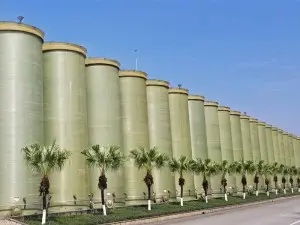
-
 Afrikaans
Afrikaans -
 Albanian
Albanian -
 Amharic
Amharic -
 Arabic
Arabic -
 Armenian
Armenian -
 Azerbaijani
Azerbaijani -
 Basque
Basque -
 Belarusian
Belarusian -
 Bengali
Bengali -
 Bosnian
Bosnian -
 Bulgarian
Bulgarian -
 Catalan
Catalan -
 Cebuano
Cebuano -
 China
China -
 China (Taiwan)
China (Taiwan) -
 Corsican
Corsican -
 Croatian
Croatian -
 Czech
Czech -
 Danish
Danish -
 Dutch
Dutch -
 English
English -
 Esperanto
Esperanto -
 Estonian
Estonian -
 Finnish
Finnish -
 French
French -
 Frisian
Frisian -
 Galician
Galician -
 Georgian
Georgian -
 German
German -
 Greek
Greek -
 Gujarati
Gujarati -
 Haitian Creole
Haitian Creole -
 hausa
hausa -
 hawaiian
hawaiian -
 Hebrew
Hebrew -
 Hindi
Hindi -
 Miao
Miao -
 Hungarian
Hungarian -
 Icelandic
Icelandic -
 igbo
igbo -
 Indonesian
Indonesian -
 irish
irish -
 Italian
Italian -
 Japanese
Japanese -
 Javanese
Javanese -
 Kannada
Kannada -
 kazakh
kazakh -
 Khmer
Khmer -
 Rwandese
Rwandese -
 Korean
Korean -
 Kurdish
Kurdish -
 Kyrgyz
Kyrgyz -
 Lao
Lao -
 Latin
Latin -
 Latvian
Latvian -
 Lithuanian
Lithuanian -
 Luxembourgish
Luxembourgish -
 Macedonian
Macedonian -
 Malgashi
Malgashi -
 Malay
Malay -
 Malayalam
Malayalam -
 Maltese
Maltese -
 Maori
Maori -
 Marathi
Marathi -
 Mongolian
Mongolian -
 Myanmar
Myanmar -
 Nepali
Nepali -
 Norwegian
Norwegian -
 Norwegian
Norwegian -
 Occitan
Occitan -
 Pashto
Pashto -
 Persian
Persian -
 Polish
Polish -
 Portuguese
Portuguese -
 Punjabi
Punjabi -
 Romanian
Romanian -
 Russian
Russian -
 Samoan
Samoan -
 Scottish Gaelic
Scottish Gaelic -
 Serbian
Serbian -
 Sesotho
Sesotho -
 Shona
Shona -
 Sindhi
Sindhi -
 Sinhala
Sinhala -
 Slovak
Slovak -
 Slovenian
Slovenian -
 Somali
Somali -
 Spanish
Spanish -
 Sundanese
Sundanese -
 Swahili
Swahili -
 Swedish
Swedish -
 Tagalog
Tagalog -
 Tajik
Tajik -
 Tamil
Tamil -
 Tatar
Tatar -
 Telugu
Telugu -
 Thai
Thai -
 Turkish
Turkish -
 Turkmen
Turkmen -
 Ukrainian
Ukrainian -
 Urdu
Urdu -
 Uighur
Uighur -
 Uzbek
Uzbek -
 Vietnamese
Vietnamese -
 Welsh
Welsh -
 Bantu
Bantu -
 Yiddish
Yiddish -
 Yoruba
Yoruba -
 Zulu
Zulu
frp sheet
Understanding FRP Sheeting Applications and Benefits
Fiber Reinforced Polymer (FRP) sheeting is a modern material innovation that leverages composite technology to enhance the mechanical properties of structures. This unique material combines a polymer matrix, typically epoxy, vinyl ester, or polyester, with fibers such as glass, carbon, or aramid to create a lightweight yet exceptionally strong product. It has been gaining popularity in various industries due to its impressive attributes, including resistance to corrosion, high tensile strength, and ease of application.
Understanding FRP Sheeting Applications and Benefits
In addition to structural applications, FRP sheeting is widely used for protective purposes. For instance, it can act as a barrier against chemical spills and environmental degradation, providing a safeguard to essential structures. Its resistance to corrosion makes it suitable for use in harsh environments, such as wastewater treatment plants and chemical processing facilities. By using FRP sheeting, companies can minimize maintenance costs and downtime, resulting in increased operational efficiency.
frp sheet

Another significant advantage of FRP sheeting is its lightweight nature, which simplifies installation and reduces labor costs. Unlike traditional materials such as steel, which can be cumbersome and require heavy machinery for transport and installation, FRP is easy to handle and can often be installed with minimal equipment. This property facilitates quicker repair and rehabilitation processes, enabling projects to be completed swiftly.
Moreover, FRP sheeting is versatile in its application and can be cut or customized to fit various shapes and sizes, providing a bespoke solution for a wide range of engineering and construction challenges. The aesthetic appeal of FRP also cannot be overlooked. With various finishes and colors available, it can be used in architectural applications where both beauty and performance are essential.
The environmental impact of materials used in construction is becoming increasingly important, and FRP sheeting is designed with this in mind. Many FRP products are made from recyclable materials, and their long lifespan contributes to sustainability efforts. Additionally, the energy used in the production of FRP is generally lower than that of traditional materials, thus contributing to a reduced carbon footprint across the lifecycle of a structure.
In conclusion, FRP sheeting represents a significant advancement in construction and engineering materials. Its unique combination of strength, lightweight properties, resistance to corrosion, and aesthetic versatility makes it an invaluable asset in modern infrastructure development and rehabilitation. As industries continue to seek more sustainable and efficient solutions, FRP sheeting will undoubtedly play a critical role in shaping the future of construction and design.









